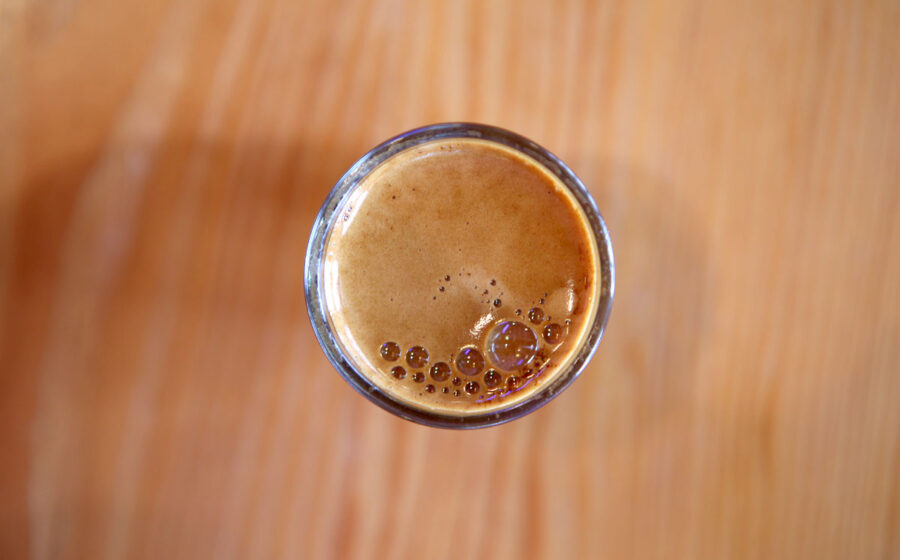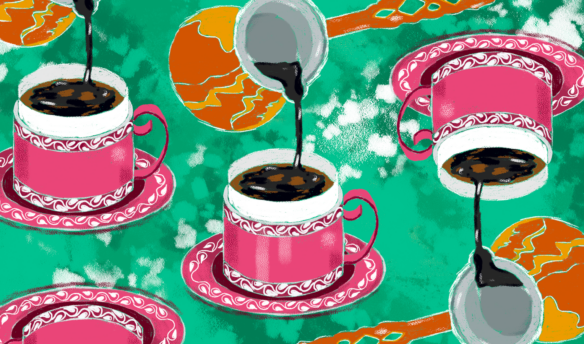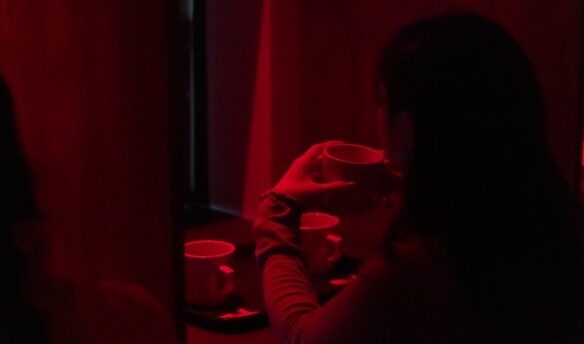[A]fter the chef at Vetri had said he wanted gas station coffee for his new blend, I was pretty sure I had his number. Though I knew that he wanted a percentage of Robusta to capture that traditional Italian flavor, I was pretty sure I could do an even better job with 100 percent Arabica. If I roasted just under second crack to develop the sugars for sweetness and body, let it rest for a week, I doubted he would know the difference.
I brought three different coffees, two were the same blend with different roast profiles (these were the coffees I figured he would enjoy the most) and the third was a wild card meant to throw him off balance. It was a coffee I knew he wouldn’t like but had all of the blend components he expected in an Italian espresso. I was testing his palate. I figured, if I could get him to guess what he was drinking and, banking that he would be wrong, then I could regain control of the situation because he would have been discredited as the superior coffee taster. Then I would have the leverage to do what I wanted—push him away from his misguided gas station coffee—and he would likely go along with it.
We tasted the three espressos and he was quite generous, saying he liked each more than the last. He liked the one I pegged for him the best. A three-bean blend of Central American Arabica roasted to full development. He flipped for the body, smooth character, and pronounced chocolate. I was very excited and the chef was really enjoying himself. I was about to pull the trap and goad him with questions before revealing it was 100 percent Arabica.
Then he dropped the bomb.
“These coffees were really great, thank you for putting all of this together. I especially liked the last one. Nice chocolate, little acidity, and smooth finish. However, it was flat. To me, this is a really nice coffee and I would probably enjoy it in a café or another restaurant, but it was too soft and really only hit one note.”
Ouch! Felt like I just got the wind knocked out of me. I normally am pretty good about controlling my emotions, but I could feel my smile drifting downward.
“How much Robusta did you put in this one?” he asked.
“None. It’s 100 percent Arabica,” a much less triumphant declaration now.
“Ah, there ya go.” he quipped. “We should start with at least fifty percent Robusta,” he followed.
My smile was gone. “Fifty percent? You do not want to start with fifty percent, most Italian espressos are normally eighty:twenty or seventy:thirty, at most. I don’t think you are going to like that high of a percentage.”
“The coffee we use now is eighty percent Robusta and we love it.”
“The coffee you use now is also six months old so it has mellowed out. They have to put that much Robusta in it so it still tastes like something after six months!”
“Well can you recreate a flavor like that?” he inquired.
“Sure, I can roast a bunch of crap and sit on it for six months if that’s what you’re looking for. We can have another tasting in the winter, it should be ready by then. Is that what you want?” My ego was clearly a little wounded.
“If that is what you think would make the best coffee for this restaurant, sure,” he said genuinely.
This struck me and I remembered why I was here in the first place. This is a great opportunity, and I do love this restaurant, and would like to make the best coffee for this restaurant.
This struck me and I remembered why I was here in the first place. This is a great opportunity, and I do love this restaurant, and would like to make the best coffee for this restaurant. I settled myself.
“OK, let’s reset. We roast everything fresh, on demand. If we use that level of Robusta it may be a little harsh. If we were actually in Italy, maybe it would work because they are accustomed to a different flavor profile than we are in America. I think the typical American audience is not going to enjoy it.”
“That’s just it: we do not serve the typical American audience. We serve calf brains and tripe here. Our customers are adventurous eaters. They are looking for an authentic experience. The food here is about lifestyle. The coffee is meant to communicate that same lifestyle,” he replied.
That was it, my ah-ha moment. I got it. He was right. The coffee had to have Robusta and it had to have that feeling on your tongue and long finish. It had to dial you back to the streets of Bergamo. I felt like hugging the man.
I went back to the shop and our next tasting went differently, better. We had come up with a blend with the sweetness and body he liked and the liveliness on the tongue that only twenty-five percent Robusta could bring to the table. He was ecstatic. He had gotten the taste he was looking for.
It was an elevated version of the Italian gas station coffee he requested. It contained a lot of the profile elements he was keen on however we used higher quality beans (including a washed Robusta from India) and roasted to order rather than resting for months.
Once I was on the other side of it all, I was able to realize what had happened. Our egos were holding us back. First he didn’t want to hear my ideas because they weren’t his. Then I couldn’t hear his ideas because I was too wounded. The fact that they asked me to create this blend made me think it was because I would bring something special to the table. When they wanted to go in a different direction I took that as a slight to my process. Then I understood that I did bring something to the table, understanding. I was able to collect myself and become open to the experience and tried to understand the chef even though he was not communicating in coffeespeak.
Since this experience, I have created a number of custom blends for a variety of chefs and culinary aficionados and I keep going back to the lessons I learned from this instance because it has made me better at working, listening, and communicating across industries. I leave my ego at the door.
Ultimately the experiment worked out and the restaurant continues to serve this espresso today. Thank goodness, too, it could have ruined Thanksgiving! I may have forgotten to mention, the chef de cuisine at Vetri is my brother, Adam Leonti.
—Jake Leonti is a writer and food and beverage advisor at F+B Therapy in New York City.















